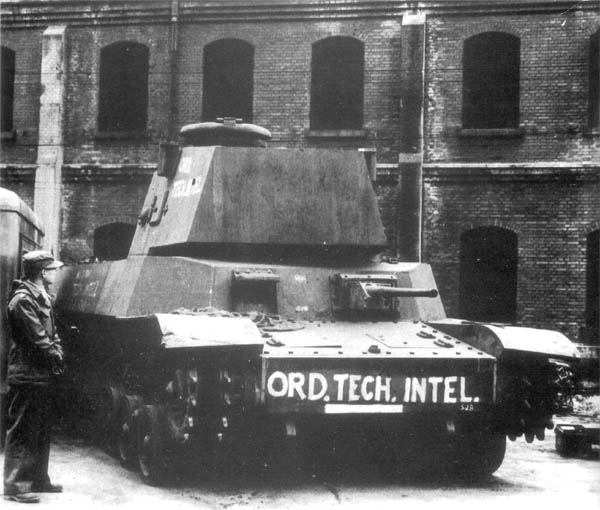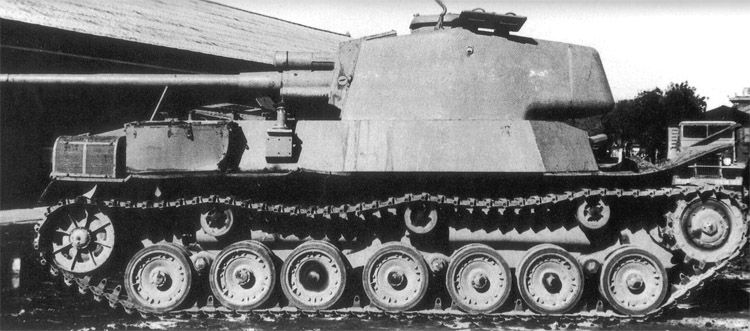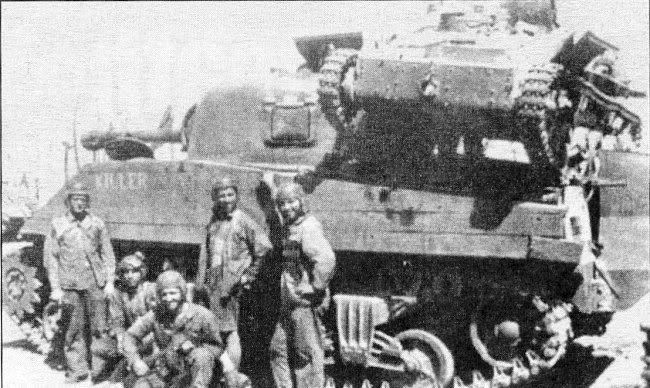http://en.wikipedia.org/wiki/Type_5_Chi-Ri
Anybody have any more info on this, or pictures?

Any of these work?



Jeff
Looks like a “borrowed” design, derivative of the KV.
Fascinating, Japan had a real tank design…
Allow me some translation on the typ 5:
Apart from the development type of the tank was given to at the end of of 1942 under largest secrecy also the development of a new heavy tank of 30t weight with only one tower in order.
It should be equipped with a large-caliber weapon for infantry support. Because of the problematic employment surrounding field in Southeast Asia the weight could notbe increased at will , since danger existed that the vehicle get stuck on damp soils.
Due to the planned high weight the chassis was increased around an track opposite that type 4 of tank, so that now on each page four pairs of tracksdistributed the weight on the soil.
As engine first a converted 12-Zylinder BMW airplane petrol engine was intended of 550 HP with air cooling. Later 500 HP a diesel engine with turbocharger should be developed by Mitsubishi.
With the problematic development of the Pacific war the objective was changed in such a manner that a vehicle should be equipped with a heavy armor-piercing weapon.Armor had been limited first on maximally 75 mm. It was however from the beginning intended to increase this value on 105 mm. The engine made a further widening of the vehicle necessary, with which a rail transport was possible on few distances only. The structure of armoring corresponded to that type 4 of tank.
The fundamental turret form was likewise taken over of the type of 4 tanks. Altogether the tower was however clearly larger, since it should take up also the semiautomatic load mechanism, which was omitted during the development the type 5 75 mm of cannon however. In addition gas-carburized rolled steel plates were used, since so same tank strengths were smaller materials consumption than possible with the casting with.
And steel was in short supply. For the first time in a Japanese tank the turret crew was located in a basket, which turned together.
The turret turn took place electrically. To the installation first the type 5 75 mm of tank cannon should come. The final armament, 88 mm a tank cannon, was proposed in 1945. A type 97,7.7 mm mg could be built depending upon need on the right of or left in the tower into a ball screen.
It served also as air defense mg. Additionally type was 1 37 mm of cannon with coaxial mg in the driver front intended. In the tower tail 18 shot ammunition could be stowed away. Further 8 shot was left in the tower, 32 shot on the right of and left in the structure beside the tower and 42 shot under the combat area soil accommodated.The ammunition for the 37 mm of cannon was left of the cannon stored, for instance under and half also under the combat area. The crew consisted of six men, whereby two each men functioned as loading and gunners.
Additionally 2 type 100 submachine guns intended to close defense. In March 1945 with Mitsubishi a prototype was finished placed and submitted driving tests. Despite the weight from 37t the vehicle was very mobile and also owing to that hydraulically supports it handles relatively good.
The installation the type 5 canons was intended for August 1945. However never took place due to the end of war . Despite the demanded weight limit one made oneself in view of the German tiger tanks and American M 26 Pershing thoughts over it how the type was to be combat effectiveness-increased 5 tanks.
In a project study there was a tank with 135 mm thick armor and armed with type 5, 105 mm of caiber. The results were unfortunately destroyed with end of war. The vehicle was shipped to end of war into the USA, tested and scrapped there.
Beautiful site you have Tom
Especially when we were used to seeing tanks like this. :shock:

Hi.
I don´t like those translators as they always make the translated texts horrible to read…
This nice vehicle was never ment to be a tank but an armoured tractor similar to the french UE or Lorraine armoured vehicles (the designation is type 94 special tractor). The turret was only planned for self defence.
Yours
tom! 
Oh sure, everyone knows that. Just like the M4 Sherman was never meant to go one on one with tanks but more as an infantry support vehicle.
I just wanted to show a size comparison of what most remember the Japanese tanks looked like. 
Jeff
interesting, but does this really going to work,… small islands, tropical rainforest, steep hills.
I guess it was intended for the home island defence maybe.
Or Manchuria. There you can find wide plains and broad valleys in between the mountain ranges. The ground is frequently hard and dry. Japan had fought several battles with the USSR before 1940 & the RKKA tanks had been important in defeating the Japanese defense. In 1945 Japan still had over 1000 tanks & light AFV posted in Manchura and northern China.
Another pic of the heavy jap tank.

Only slightly related, but… did Chinese have any (chinese) tanks/armored vehicles during World War II?
_
A profile of the Type 5 as should look with the 75mm gun, let me say nice.
From “japanese Tanks 1939-45” Osprey New Vanguard 137.
Most common Chinese tanks between 1937 and 1942 would have been either German Pz I and Russian T-26. The KMT gov’t had close ties to both Germany (until Germany became an ally of Japan and cut off military aid. You can see more about this here: http://en.wikipedia.org/wiki/Sino-German_cooperation_(1911–1941) ) and USSR. These, of course, would have been supplemented by whatever they could buy on the world market. After 1942, though, Chinese armor would have been increasingly American made (M-3 Stuart was probably most common, I think–I don’t think they got any Shermans or Grants), thanks to Lend-Lease. Not likely they would have had gotten too many tanks–especially the heavier ones–since the supply routes to China were mostly blocked off.